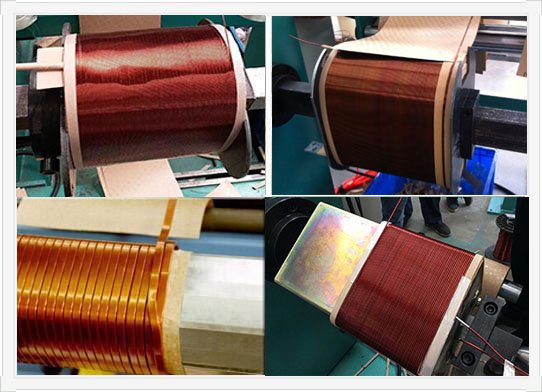Enameled wire is mainly used for winding wires of motors, electrical appliances, instruments, transformers and other working places that work at temperatures above 180°C, such as polyesterimide enameled wire, polyimide enameled wire, polyester enameled wire, polyesterimide/ Polyamide-imide composite enameled wire. This kind of enameled wire often has good chemical resistance, and now I will introduce this performance to you.
Chemical properties include solvent resistance, direct solderability. Solvent resistance. Generally, the enameled wire needs to go through the impregnation process after being wound into a coil. The solvent in the impregnation varnish has different degrees of swelling on the paint film, and it is even worse at higher temperatures. The chemical resistance of the enameled wire paint film is mainly determined by the characteristics of the paint film itself. Under certain conditions of the paint material, the enamelling process also has a certain impact on the solvent resistance of the enameled wire.

1.1 General
This test is applicable to enamelled round wire with a nominal conductor diameter over 0,250 mm and to enamelled rectangular wire.
The test is not suitable for round wires with a nominal conductor diameter up to and including 0,250 mm.
Resistance to solvents is expressed by the pencil hardness of the wire after solvent treatment.
1.2 Equipment
The following solvents shall be used:
- standard solvent as specified below, or
- solvent as agreed between purchaser and supplier.
The standard solvent shall be a mixture of:
- 60 % by volume white spirit with maximum aromatic content of 1 8 %;
- 30 % by volume xylene;
- 1 0 % by volume butanol.
The pencil to be used shall be a lead pencil of the hardness specified in the relevant
standard. Before each test, the point of the pencil shall be sharpened with a smooth-cut file to
form an angle of 60° symmetrical about the axis of the lead. Key
1 Winding wire specimen
2 Pencil
3 Test surface
NOTE Angle tolerances ±5°
Figure 1 – Pencil and specimen for solvent test
1.3 Procedure
A straight piece of wire, approximately 1 50 mm in length, shall be preconditioned for
(1 0 ± 1 ) min at (1 30 ± 3) °C in an oven with forced air circulation. A substantial length of the
wire shall then be immersed in standard solvent contained in a glass cylinder and shall be
maintained therein at a temperature of (60 ± 3) °C for a period of (30 ± 3) min. The wire shall then be removed from the solvent. The hardness of the wire surface shall then be determined
in the following manner within a period of 30 s after removal from the solvent.
The specimen to be tested shall be laid on a smooth hard surface according to Figure 1 . In
the case of rectangular wires, the test shall be carried out on the largest side of the wire. The
pencil shall be placed on the surface of the wire at an angle of approximately (60 ± 5) and the
sharpened edge shall be pressed slowly along the surface of the wire with a force of
approximately (5 ± 0,5) N.
Three tests shall be made. It shall be reported if the coating is removed with exposure of the
bare conductor.
NOTE 1 This method can also be used for testing resistance to other fluids, for example oil.
NOTE 2 Where it is desired to determine the hardness of the insulation, the hardness of the lead pencil which just
fails to remove the coating from the surface of the conductor is considered to be the hardness of the wire surface.

The direct solderability of the enameled wire reflects the ability of the enameled wire to solder during the winding process without removing the paint film. The main factors affecting the direct solderability are: (1): the influence of the process, (2) the influence of the paint,
Therefore, the chemical properties indicate the ability of the paint film to withstand the erosion of chemicals such as acids, alkalis, salt spray, organic solvents or refrigerants. The product has high heat resistance, refrigerant resistance, severe cold resistance, radiation resistance and other characteristics, high mechanical strength, stable electrical performance, good chemical resistance and refrigerant resistance, and strong overload capacity. Widely used in refrigerator compressors, air conditioner compressors, electric tools, explosion-proof motors and motors and electrical appliances used under high temperature, cold, radiation resistance, overload and other conditions.
